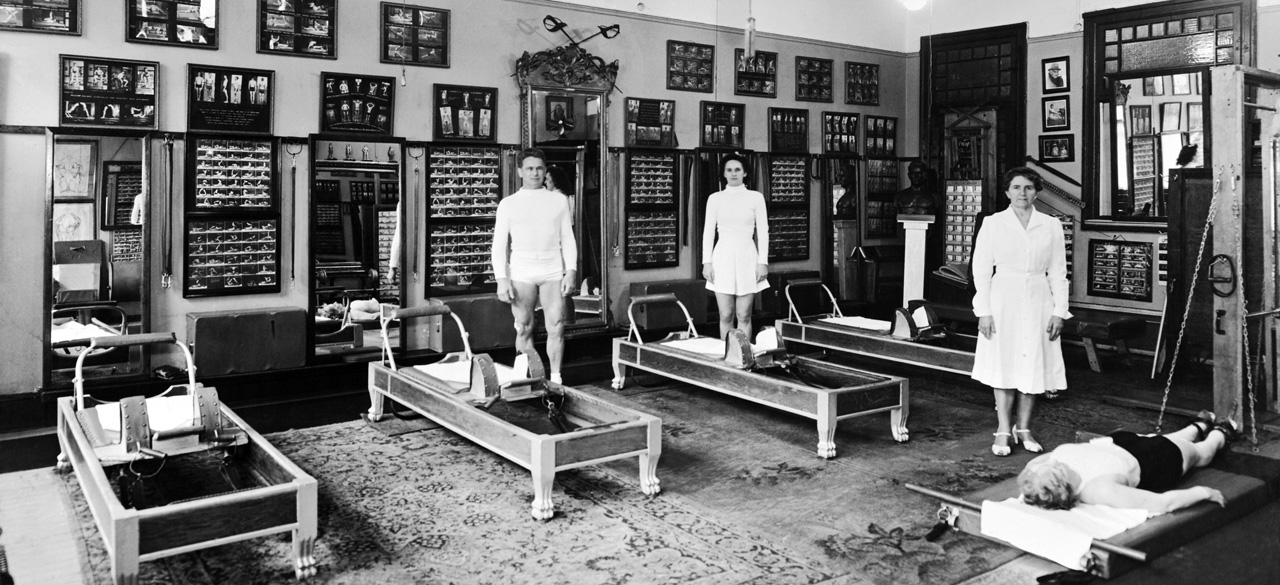Life of Joseph HUBERTS Pilates
Joseph Hubertus Pilates was born in Monchengladbach Germany in 1883. As a child, Joseph had asthma and other ailments. He turned to exercise and athletics to battle these ailments and was always studying various exercise regimens to expand his knowledge base. He became enamored by the classical Greek ideal of a man balanced in body, mind and spirit, and he began to develop his own exercise program based on this concept.
Growing into adulthood, Joseph was no longer the sickly child he had once been, as he became an avid skier, diver, gymnast and boxer.
In 1912, Joseph went to England, where he worked as a self-defense instructor for detectives at Scotland Yard. At the outbreak of World War I, Joseph was interned as an "enemy alien" with other German nationals. During his internment, Joseph refined his ideas and trained other internees in his system of exercise. He rigged springs to hospital beds, enabling bedridden patients to exercise against resistance, an innovation that led to his later equipment designs. An influenza epidemic struck England in 1918, killing thousands of people, but not a single one of Joseph's trainees died. This, he claimed, testified to the effectiveness of his system. After his release, Joseph returned to Germany. His exercise method gained favor in the dance community, primarily through Rudolph von Laban, who created the form of dance notation most widely used today. When German officials asked Joseph to teach his fitness system to the army, he decided to leave Germany for good.
Benefits of Pilates
Pilates exercises develop a strong 'core', or centre of the body. The core consists of the deep abdominal muscles, along with the muscles closest to the spine. Control of the core is achieved by emphasizing proper breathing, contracting specific muscle groups, correct spinal and pelvic alignment, and concentration on smooth flowing movement.
Joseph Pilates based his approach on his knowledge of biomechanics principles of movement and anatomy. His system of training the body involves progressions of exercises designed to train the muscle system, in coordination and in counterbalance against each other.
In Pilates, the quality of movement is valued over quantity of repetitions. Proper breathing is essential, and helps you execute movements with maximum power and efficiency.
Pilates conditions the whole body, even the ankles and feet. No muscle group is over-trained or under-trained. Your entire musculature is evenly balanced and conditioned, helping you enjoy daily activities and sports with greater ease, better performance and less chance of injury.
Pilates for older adults
Often, those in their later years may feel intimidated by learning a new form of exercise that is not necessarily seen as a senior activity. In fact, Pilates for older adults is proven to be one of the most advantageous types of exercises for a mature body. This form of exercise is low impact, it does not strain joints and is a very safe method of exercise to start a new regime at any age. It increases flexibility and range of motion, which allows for greater freedom of movement and prevention of strains and injuries.



